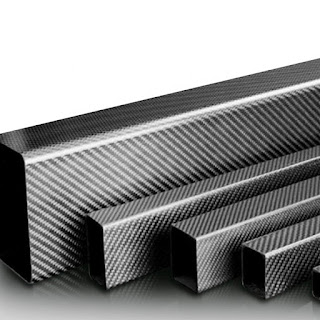What is the Future of Carbon Fiber?
Carbon fiber has been around for more than half a century and has already made a significant impact in various industries. It is a strong, lightweight material that is popularly used in the aerospace, automotive, and sports equipment industries. As technology continues to advance, what does the future hold for carbon fiber? Will it continue to dominate as a material of choice, or will it be replaced by new materials that offer better properties? In this article, we will explore the future of carbon fiber and its potential impact on different industries.
The Current State of Carbon Fiber
Carbon fiber is made
by weaving
or knitting carbon filaments into a fabric, which is then impregnated with a
resin and cured in an oven to create a rigid structure. The resulting material
has a high strength-to-weight ratio, making it ideal for applications where
weight reduction is critical. Carbon fiber is commonly used in the aerospace
industry for aircraft parts, such as wings and fuselages, and in the automotive
industry for components like body panels and suspension parts.
One of the primary
benefits of carbon fiber is its strength, stiffness, and durability. It can
withstand high temperatures and is resistant to corrosion, making it an
excellent choice for use in harsh environments. Carbon fiber is also
electrically conductive, making it useful in electronic and electrical
applications. The material's unique properties have also led to its use in
other industries such as wind energy, sporting goods, and medical
devices.
The Future of Carbon Fiber
The future of carbon
fiber looks bright as advancements in technology continue to improve its
performance and reduce its production costs. Here are some of the potential
developments that could shape the future of carbon fiber:
- Improved
Manufacturing Processes
Currently, the
manufacturing process for carbon fiber involves weaving and curing individual
strands of carbon filaments. This process is time-consuming and expensive,
limiting the use of carbon fiber in mass-produced applications. However, new
manufacturing techniques such as 3D printing and automated fiber placement
could make carbon fiber production faster, cheaper, and more accessible.
- Recycling
Carbon Fiber
As the use of carbon
fiber continues to grow, so does the amount of waste generated during
production and disposal. Recycling carbon fiber could help reduce waste and
lower production costs. Researchers are currently exploring methods to recycle
carbon fiber, such as pyrolysis and solvolysis, to recover the material's valuable
properties.
- Integration
with Other Materials
Carbon fiber can be
combined with other materials to create composites that offer unique
properties. For example, carbon fiber can be integrated with metals to create
lightweight, high-strength materials that are ideal for aerospace and
automotive applications. Combining carbon fiber with plastics could also create
materials that are durable and lightweight.
- Nanotechnology
Nanotechnology could
revolutionize the way carbon fiber is produced and used. Researchers are
exploring the use of carbon nanotubes, which are stronger and lighter than
traditional carbon fiber, in composite materials. Carbon nanotubes could also
be used to create electrical conductors, energy storage devices, and biomedical
implants.
Impact on Different Industries
The potential
advancements in carbon fiber could have a significant impact on different
industries:
- Aerospace
Industry
The aerospace industry is
one of the largest consumers of carbon fiber, and any advancements in
manufacturing and recycling could significantly reduce production costs.
Improvements in carbon fiber properties could also lead to the development of
new aircraft designs that are more fuel-efficient and environmentally friendly.
- Automotive
Industry
The automotive industry
is also a major user of carbon fiber, with applications ranging from body
panels to suspension parts. The integration of carbon fiber with other
materials could lead to the development of lighter, stronger, and more
fuel-efficient vehicles.
- Sports
Equipment Industry
Carbon fiber is widely
used in the sports equipment industry, with applications ranging from bicycle
frames to tennis rackets and golf clubs. Improvements in carbon fiber
technology could lead to the development of more durable, lightweight, and
high-performance sports equipment.
- Wind
Energy Industry
Carbon fiber is used
in the construction of wind turbine blades, which must be lightweight and
durable to withstand harsh weather conditions. The use of carbon fiber in wind
energy could increase as production costs decrease and recycling methods
improve.
Challenges and Limitations
Despite the potential
benefits of carbon fiber, there are still some challenges and limitations that
must be addressed:
- Cost
Carbon fiber
production is still expensive, which limits its use in mass-produced
applications. Improving manufacturing processes and recycling methods could
help lower production costs and increase accessibility.
- Sustainability
The production and
disposal of carbon fiber generate significant waste and environmental impacts.
Recycling carbon fiber could help reduce waste, but sustainable production
methods and disposal solutions are also needed.
- Material
Properties
While carbon fiber has
excellent properties, it is not suitable for all applications. For example, it
is not as impact-resistant as some metals and plastics, which limits its use in
some industries.
Conclusion
The future of carbon
fiber looks promising as advancements in technology continue to improve its
properties and reduce production costs. New manufacturing
processes, recycling methods, and nanotechnology could revolutionize
the way carbon fiber is produced and used. The impact of these advancements
could be significant in industries such as aerospace, automotive, sports equipment,
and wind energy. However, challenges such as cost, sustainability, and material
properties must be addressed to realize the full potential of carbon fiber.
Overall, carbon fiber will continue to be an important material in various
industries, and its future looks bright.

